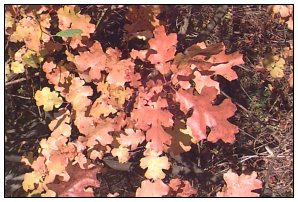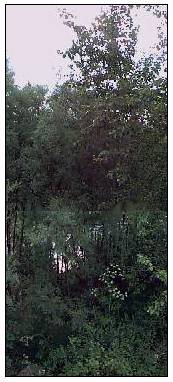 Station 18: Fresh Water in Quantity and Quality
Station 18: Fresh Water in Quantity and Quality
VISIT THIS SPOT at different times of the year and you will see the water level change dramatically as a result of human use. This has always been the case with Bear Creek. People settled along Bear Creek because it was a source of water in an area that annually gets less than 20 inches of rain. In the early 1900's, as population grew, irrigation needs and the water demands on Bear Creek also grew. In the 1920's, the creek often became dry and stagnant in the summer. People built storage facilities when the need arose.
Around 1925, the Bureau of Reclamation assisted local irrigation districts in building Hyatt Reservoir. In the 1960's, Howard Prairie Reservoir was constructed. These facilities were connected to Emigrant Lake, at the head of the Bear Creek Valley, and currently supply water to Bear Creek. Over half of Bear Creek's water is now imported from the Klamath Basin through the Hyatt/Howard storage system.
Across the bridge is a sign warning you to avoid contact with the water in Bear Creek. Periodically the water is tested and is sometimes found to be over the permitted state standard for safe water contact activities. Although sources of contamination are being eliminated, the possibility of unsafe water still exists, especially during periods of low flow.
The quality of the water in Bear Creek has dramatically improved over the years due to storm drain repairs and clean-ups of tributaries. However, it is important to realize that storm drains from I-5 and all the communities along Bear Creek do not drain into a sewer system, but flow directly into the creek.
Accidental spills can harm fish and wildlife that depend on Bear Creek. Funded by the Clean Water Act, the Rogue Valley Council of Governments (RVCOG) Water Quality Program began in the mid-1970's. Federal funding ended in the mid-1980's, but local agencies were able to fund a minimum level of effort to improve and maintain water quality in Bear Creek.
The future looks bright for the improvement of this important resource because of the RVCOG Water Quality Program, and the growing awareness by the public that Bear Creek has a tremendous aesthetic, recreational, and wilflife value. No longer is the creek viewed as a repository for trash, but as a unique asset to the communities through which it flows.

This ends the Medford segment of the Bear Creek Greenway Trail.

















